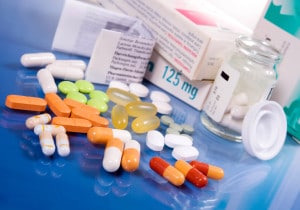The cocktail effect explained at last
Why do certain harmless chemical substances become harmful when mixed together? Researchers from Montpellier have just found an explanation for the famous "cocktail effect".
 On the one hand, take a small dose of ethinylestradiol, a compound found in contraceptive pills. There's no risk to your health. On the other hand, take a tiny amount of trans-nonachlor, found in certain pesticides. In very small quantities, it's harmless. But if you take these same doses at the same time, all bets are off: the toxicity of these substances from the large family of endocrine disruptors is multiplied. A "cocktail effect" that has long remained a mystery.
On the one hand, take a small dose of ethinylestradiol, a compound found in contraceptive pills. There's no risk to your health. On the other hand, take a tiny amount of trans-nonachlor, found in certain pesticides. In very small quantities, it's harmless. But if you take these same doses at the same time, all bets are off: the toxicity of these substances from the large family of endocrine disruptors is multiplied. A "cocktail effect" that has long remained a mystery.
Researchers from the Centre de Biochimie Structurale, the Institut de Recherche en Cancérologie de Montpellier and the Institut de Génomique Fonctionnelle have elucidated in vitro a molecular mechanism that could contribute to this phenomenon. They have shown that certain estrogens such as ethinylestradiol and organochlorine pesticides such as trans-nonachlor, although very weakly active on their own, have the capacity to bind simultaneously to a receptor located in the cell nucleus and activate it synergistically.
A hangover cocktail
Molecular-scale analyses indicate that the two compounds bind cooperatively to the receptor, i.e. the binding of the former promotes the binding of the latter. As a result, the mixture induces a toxic effect at much lower concentrations than the individual molecules.
These results pave the way for new studies on the cocktail effect: there are some 150,000 compounds in our environment that are supposedly harmless to human health, but their combined action could have unexpected effects.
Synergistic activation of human pregnane X receptor by binary cocktails of pharmaceutical and environmental compounds. V. Delfosse, W. Bourguet et al. Nature Communication http://dx.doi.org/10.1038/ncomms9089